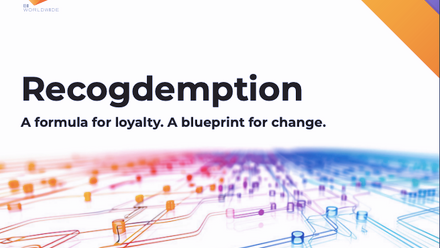Five key considerations when implementing a global reward and recognition scheme

Whilst implementing such schemes can be a challenge initially, there are many clear benefits which override. Such an approach fosters better employee recognition, engagement, motivation and wellbeing across the board, ensures consistency across the different regions in which an organisation operates and can maximise efficiencies in terms of administration, human resources and ultimately, cost.
To make a global employee recognition scheme a success across the board, employers need to give local managers the power to localise elements of the strategy and maintain strategic control at the same time. What does that mean in practice?
1. Implement a fully automated, centrally managed online portal
The most effective employee reward and recognition programmes utilise fully automated, online portals that can be accessed within the workspace and remotely via mobile/tablet. These make it quick and easy to nominate colleagues, publicly celebrate your employees’ achievements and redeem rewards and awards in an instant.
The technical functionality of portal-based programmes also allows for greater social recognition, via in-built tools such as winners walls, message panels, likes and colleague notifications. Automating the approval process for granting recognition awards means that you can introduce operational efficiencies on a global scale, while capturing insightful data about how a scheme is operating.
2. Culture and demographic segmentation
In order to make these employee reward and recognition programmes successful, all local managers in each region should be given the autonomy to make the scheme relevant to their own teams within the same programme formation and guidelines. The starting point should be to determine the best fit for the culture and demographic of your workforce, as this will differ from country to country. Managers should localise the recognition awards that are on offer and consider working with local suppliers to deliver local rewards.
Encourage local area managers to undertake spontaneous and timely acts of recognition. Many employees prefer receiving rewards spontaneously and for good work, rather than receiving them at events such as award ceremonies, end-of-year functions or on their birthday.
3. Currency and cost, language and culture
Different languages, cultures, currencies and exchange rates are critical considerations to make when looking to implement global programmes – there are so many factors which come into play, and ultimately which impact the bottom line. Living costs can differ dramatically from country to country, and what may be a grand reward for one country in terms of value, may not be as impressive in another.
It’s advisable to develop a currency cost of living (parity) index to ensure consistency and price parity across the board, which will be aligned with both local and global budgets. This needs to incorporate elements such as foreign exchange, the process of attaining consumer goods for rewards, administration costs, reward costs and more.
Within this, companies need to consider elements such as reward delivery, for example if rewards are done electronically or need a fulfilment agency and more manpower. This will affect how the programme is built and what specific backend functionalities should be included.
In addition, when such schemes are delivered locally, it’s also important to take the many cultural differences into account as these vastly vary from country to country. Some countries have different weekend days for example (UAE and Middle East) whereas some may have different attitudes to certain leisure activities.
4. Utilise employee recognition to unify a disparate workforce
Due to the many layers and complexities, organisations often struggle to create a genuine culture and set of values that rings true across the globe. Employee recognition can be used to directly address some of the challenges that arise from having a such a widespread workforce as recognition is a global human need and expression. By being extremely clear about which set of behaviours are being rewarded – the hows and why – employers can clearly reflect the values that really matter to their organisation. Having a personalised set of criteria that hone in on the behaviours and attitudes which matter most, can once again bring a sense of unity and simplification to the organisation.
5. Centralised communication strategy
It’s particularly important to have local managers engaged from the outset. From the get-go, involve them in the process and clearly communicate the benefits and value of a dedicated platform for employee recognition. Once management is on board and has ironed out any issues or queries, it will be more effective to roll it out to the various teams.
It goes without saying that it’s crucial to develop a detailed communications plan around the launch of a reward and recognition scheme, even more so on a global level in order to inform and educate employees across the board. The more communication touchpoints, the better – different types of communications (for example, digital or face-to-face) work better for different sets of employees. This should incorporate a range of different channels including posters, presentations, emails, internal intranet platforms, social media platforms, SMS messages, induction sessions, employee handbooks and more.
This article is provided by Xexec.
Supplied by REBA Associate Member, Xexec
Xexec is the UK's leading Reward and Recognition and Employee Benefits provider.







